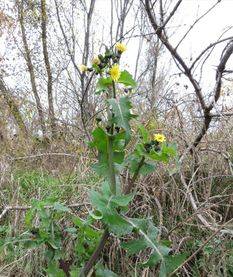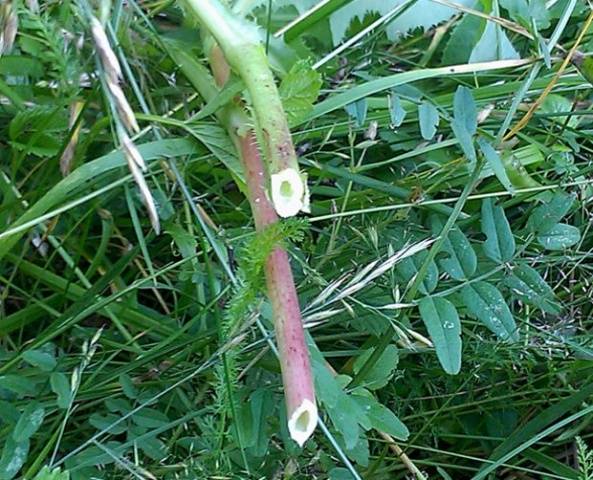Content
Every gardener faces the problem of eradication weed in their areas. Types of weeds a lot. There are among them annuals and perennials. Plants that have sprung from seeds are much easier to control than perennial grasses that have a long and branched root system.
One of these weeds that causes a lot of trouble for land owners is field sow thistle. In terms of its vitality, this plant is often compared to the pinworm. Both of these weeds can be reborn from even a small piece of root left in the ground. Measures to destroy green pests in gardens and vegetable gardens are an important step in obtaining a rich harvest.
Legends about thistle
People made up fairy tales and legends about almost every plant. He did not escape glory and sow thistle. In the old days it was believed that this weed plant was endowed with supernatural properties. A person, having bathed in a decoction of thistle, became practically healthy. The Poles firmly believed that witch root (as field sow thistle was called) would get rid of the evil eye and other tricks of the witchcraft world. The Russians attributed to the field plant a connection with evil spirits.
According to the surviving legend, God called people to himself and endowed everyone with a useful plant. Satan, who believed that he also made efforts to create the world, demanded that the Lord give him something.When God gave oats to Satan, the apostles Peter and Paul decided that people needed the plant more. They made it so that Satan forgot what he received as a gift, but remembered the word sow. The evil spirit did not like the plant, and since then he has been scattering the seeds of the malicious weed throughout the fields, in orchards and vegetable gardens, along forest edges and wastelands, along the banks of rivers and lakes.
But this is a legend; this weedy field plant causes a lot of trouble for gardeners. Look at the photo to see how tall the weed grew next to the trees.
Description of the species
Field sow thistle is a herbaceous plant from the genus Asteraceae, Compositae. Perennial with root suckers.
The weed is quite tall, it can grow up to 180 cm. Getting rid of the tenacious field thistle is very difficult, since the central root goes deep up to 50 cm, and the horizontal ones are located in the top layer of soil at a depth of 6-12 cm, forming a widely branched system with a huge number of buds .
The trunk of the field weed is straight, woody at the base, with small spines. The inner surface of the stem is hollow. A white milky sap appears on the cut of the stem or leaf. Because of this, some gardeners call sow thistle field milkweed or, based on the color of the buds, yellow grass.
The dark green leaves are spiny and have jagged edges. The leaves below are dull, and the upper leaf is shiny. Pulling out thistle with bare hands is problematic.
The flowering of thistle thistle is long-lasting, beginning in early June and continuing until the first frost. The golden-yellow flowers of the weed are collected in neat baskets. After flowering, a huge number of seeds with fluff on the top are formed. They are carried by the wind over long distances. One weed plant produces up to 20 thousand brown seeds.
Field thistle propagates, based on the description, by seeds and vegetatively. The remaining root segment gives rise to several new plants after 3 months, this is clearly visible in the photo.
In the wild, yellow and pink sow thistles are found (pictured). Both of these species can live in gardens and vegetable gardens.
Control measures
But you definitely need to get rid of it. What is the best way to do this, because the main thing is to get vegetables and fruits that are environmentally friendly and safe for humans and animals.
Answering the question of how to deal with thistle, it should be noted that there are gentle and aggressive ways to combat this harmful weed:
- chemical treatment;
- mechanical methods;
- folk remedies.
Chemical treatment
The use of chemicals to control field thistle is not always possible. After all, land owners today are trying to grow environmentally friendly products that are safe for humans and animals. And any chemicals, and herbicides in particular, except for killing weeds, poison the soil. Therefore, the use of Hurricane, Tornado, Roundup, Arsenal and other drugs to combat field thistle are possible in areas that will not be planted this year. Weed killers can be used for paths, along fences, where cultivated plants do not grow. Single-growing weeds and sow thistles can be destroyed point by point, as shown in the photo.
When working with chemicals on the site, try not to get them on crops. After all, during processing, the green mass of weeds burns. To treat areas infested with sow thistle, you need to choose dry weather without wind.
Weed control measures must be associated with safety:
- You need to wear gloves, long sleeves and a face covering.
- After processing the sow thistle, you need to wash all exposed parts of the body with warm water and detergents.
- The remaining solution should not be poured out anywhere; it is better to splash it onto the treated area.
- The sprayer is thoroughly washed.
- During the day, try to keep children and animals away from the area with treated weeds.
Mechanical impact
You can destroy yellow or pink sow thistle without chemicals if you take care of your garden and weed the beds and paths in a timely manner.
Most often, sow thistle grows in a potato field, in a beet and carrot bed. When small shoots appear, they can be uprooted. But the risk that small pieces of root will remain in the soil always remains. Gardeners often write about this in reviews: we are fighting, we are fighting with thistle, but we cannot get rid of it.
Potatoes are processed several times during the season, with hoees and shovels in the hands of gardeners. By repeatedly cutting off the above-ground part, you can weaken the root and the grass will stop growing.
- It is best to clear the soil of field sow thistle roots after harvesting. Digging with a pitchfork, pull out the plant by the roots. Try not to shake off the seeds so as not to increase your work for the next year.
- Pulled weeds can be used as compost. The roots cannot be left; they quickly germinate again.The soil is not loosened so that the weed seeds remaining on the surface freeze over the winter.
- The place where yellow sow thistle grows rapidly can be covered with agrofibre, roofing felt, cardboard, or covered with construction waste. Under such cover a high temperature is created and all weeds die.
Folk remedies
Since field sow thistle has been annoying gardeners since ancient times, our ancestors came up with many interesting methods that are safe for humans. Our readers tell us about this. Here are some useful tips:
- An area with a large amount of yellow thistle is covered with a thick layer of sawdust. Plants cannot break through the thickness; the root eventually becomes exhausted and dies.
- How to get rid of weeds using green manure? By sowing a field with legumes, alfalfa, vetch, lupine, rye, and mustard, you can achieve 100% destruction of thistle. When the plants grow up, they are covered with dense material and left in this state until next spring. Green manure will not only get rid of field weeds, but also improve soil fertility.
- Thistle does not like the proximity to wheat. If you sow grains in an area with this weed, it will stop growing.
- The use of ammonia when spraying field thistle is an effective method. A bucket of water will require at least 6 bottles of ammonia. First, the above-ground part dies, and then the root. When processing, you must use personal protective equipment.
Weed control rules:
Conclusion
Your efforts will not be in vain if you maintain the area regularly.Loosening, manual removal of weeds, including thistle, and the use of folk remedies will allow you to get a rich harvest of vegetables, fruits and berries.
In conclusion of the article, we would like to note that all types of thistles are medicinal herbs. Their healing properties were known to our ancestors. The medicinal plant is collected in places far from roads.















